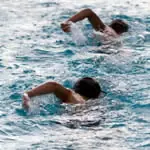
John Wooden, the legendary UCLA basketball coach, is a great educator who created one of the most profound definitions of success: the Pyramid of Success. Coach Wooden's Pyramid of Success includes 15 concepts, describing the essentials of success from industriousness to enthusiasm.
Using Wooden's Pyramid of Success concept, the Open Water Pyramid of Success describes the optimal training regimen for a successful open water swimmer, whether the athlete is aiming to do a triathlon for the first time, cross the English Channel or compete in an open water race.
The base of the Open Water Pyramid of Success comprises of Base Training, Speed Training and Distance Tolerance. These training fundamentals are understood and utilized by experienced pool coaches.
At the next level of the Open Water Pyramid of Success, Race Specific Training, Skill Training and Open Water Acclimatization are the key components. These training fundamentals are much less well-known and are rarely emphasized by coaches during their pool training.
At the apex of the Pyramid is Tactical Education. You need to know how to deal with each possible scenario that can present itself in a dynamic environment. Because your competitors and the water conditions are always in flux, you need to train for, anticipate and respond to the ever-changing conditions. This education can only come from real-world experiences, observation and study.
The 7 Blocks of the Open Water Pyramid of Success
1. Base Training
Improve your basic fitness by repeated aerobic training sets done in the pool, a basic component of structured pool workouts.
2. Speed Training
Improve your speed by up-tempo swims including anaerobic training sets.
3. Distance Tolerance
Develop your ability to swim the specific distance of your chosen open water distance (e.g., 1.5K, 2.4 miles or 10K).
4. Race-Specific Training
Simulate open water conditions in the pool and acclimate yourself to conditions during open water training sessions. This includes pace-line sets and deck-ups in the pool.
Pace-line sets are where groups of swimmers closely draft off of one another in the pool, changing pace and leaders throughout the set (e.g., 3 x 600 with a change of leader every 100 yards).
Deck-up sets (e.g., 10 x 100 @ 2:00) are where you immediately pull yourself out of the water and dive back into the pool after every 100. This simulates on-the-beach finishes or T1 transitions when you must suddenly go vertical and run up to the beach as you experience a heart rate spike.
5. Skill Training
Practice your sightings, starts, turns and navigation during pool practices when open water is not an option. For navigation and sightings, swim your intervals normally, but lift your head twice every fourth lap. For turns, touch the wall without doing a flip turn or pushing off the wall during the last two laps of your repeats.
For drafting practice, swim parallel to two teammates in one lane with one swimmer always slightly behind and then sprinting ahead on the last lap. For feeding, place gel packs in your swimsuits to practice fluid in-take during main sets. To replicate starts and finishes, sprint short distances (25's or 50's) together with two teammates in a lane starting at the same time.
6. Open Water Acclimatization
Just get in (the open water). Acclimatization is absolutely required to become familiar with the open water. Get used to cold water. Get used to rough water. Practice in the afternoon when it is windy, not in the morning when it is glassy calm.
Understand that you may hit jellyfish, see marine life, swim against wind chop, smell boat fumes, run into seaweed, and need to bodysurf in a race. Think of yourself as an aquatic adventurer; relish the experience, do not fear it.
7. Tactical Education
Study the dynamics of open water racing. Understand how packs get formed and why they take on certain shapes. Learn where and why packs get strung out and where you should tactically place yourself in the pack at different points during the race.
You need an arsenal of tools and tactics to perform well. Even though some swimmers have an innate navigational skill and a high tactical IQ, most athletes have to learn.
Knowing what these tools are is the first step. Knowing when and how to use these tools is the next step. Your tactical education—an oft-overlooked aspect of open water training—separates consistent winners from the rest of the pack.
 See more swimming tips or find swimming lessons near you.
See more swimming tips or find swimming lessons near you.
Steven Munatones is a multi-time USA Swimming national open water swim team coach, NBC Olympics marathon swimming commentator, International Marathon Swimming Hall of Fame inductee and 1982 world 25K swimming champion. He created the Open Water Swimming Dictionary, and conducts race analysis and research on open water swimming—from drafting to stroke technique—for the website The Daily News of Open Water Swimming.
Get ACTIVE on the Go


Meet Mobile
Swim smarter: heats, lane assignments and real-time results in the palm of your hand.
Available for iOS | Android
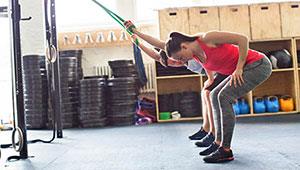

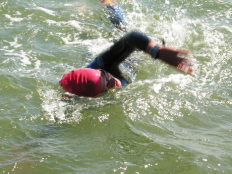
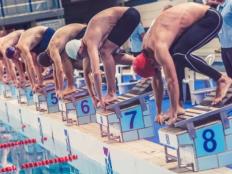
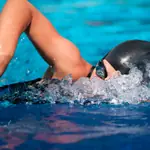

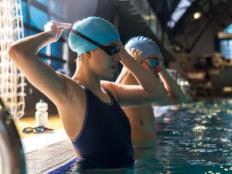
Discuss This Article